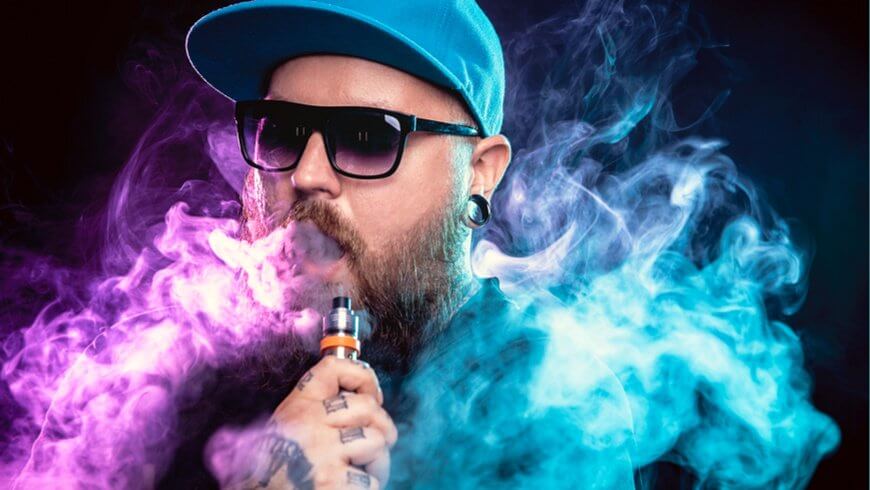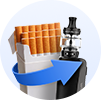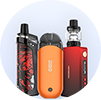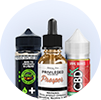Why Sub-Ohm?
In order to answer the above question, we present a tabulated description of the pros and cons of using sub-ohm.
| Pros | Cons |
|
1. Huge clouds of vapor. Why vape if you can’t flaunt your clouds? It’s the real deal for cloud chasers. 2. Sub-Ohm vaping increases the overall flavor since you are inhaling a lot more vapor than you would with an above-ohm device. 3. A stronger hit. This is one reason why sub-ohm vaping should only be for advanced or expert users. With stronger hits, more of the substance being vaped (nicotine or marijuana [do you want to mention marijuana?]) is absorbed by the lungs. |
1. Sub-ohm vaping devices are on the expensive side. At least when compared to above- ohm devices. 2. Due to the intensity of vaping, the coils have to be replaced more often since they burn out faster. 3. It is expensive when you consider the cost of the device and the number of e-juice refills required. |
What is Sub-Ohm Vaping?
In order to answer the above question, we present a tabulated description of the pros and cons of using sub-ohm.
Sub-Ohm vaping, also known as sub-Ohming. It refers to vaping with an electronic cigarette that has a coil with a resistance level that is below one ohm. What does this mean to the average vaper?
A lot of regular vaporizers are have a resistance in the 1.5 to 3 Ohms range (they are above –Ohm).O the resistance is on the high side. But with sub-Ohm devices, there is a reduced resistance. This reduced resistance causes the atomizer coil to heat up faster, vaporize more liquid, produce more robust flavor and generate thicker clouds because of the increased current that passes through the coil.
There are risks involved with sub-Ohm vaping particularly when people who do not understand the dynamics of electricity incorrectly build mods or coils themselves. This is the reason for vaping accidents that often leads to injuries and damaged equipment.
However, you can safely sub-Ohm vape if you use premium materials; take the time to understand the different coils, their wattage and which combination works best. Also ensure that you do not overheat the battery while powering the coils.
Three Factors That Affect the Sub-Ohm Vaping Experience:
Coil Resistance: Going by the discourse, coil resistance is a deciding factor in sub-ohm vaping. Coils with increased surface areas conduct more current because of the lowered resistance. Thinner coils have the opposite effect because resistance and wattage output are inversely proportional.
Wattage: This term refers to the actual power that is generated by an electrical unit. In the context of this article, increased wattage means more heat produced, increased vapor and of course more flavor.
Battery Voltage: With regard to vaping, this refers to the power generated by the batteries of your vaping device. Increased voltage means higher wattage except in the event of increased resistance.
Right Vaping Devices for Sub-Ohm Vaping
Not all vape devices can be used for sub-ohm vaping because of the requirements (coil resistance) needed for the special kind of vaping that sub-ohming is. Here are some devices that emit sub-ohming.
Sub-Ohm Tanks: they are made of two materials: stainless steel and glass. Of course their coils are low resistance and are commercially produced and disposable. These tanks are meant for vapers who cannot build their coils but want to experience sub-Ohming. One example of such a tank is Vaporesso skrr tank, NGR tank,Cascade tank.
Rebuildable Tank Atomizers (RTAs)
These are vaping tanks with rebuildable decks. Users have to build their own coils which must be within the tank. E-liquid is stored in this tank so there is no need for dripping. An example is the Coil Master Elfy RTA.
Rebuildable Dripping Atomizers (RDAs)
These devices simply consist of a customized coil and cotton which the vaper wraps around the coil. There is no tank as the e-liquid is dripped onto the wick until it is saturated. Vaporess Delta is one example.
E-Liquid: PG / VG Ratios, Nicotine Best Suited For Sub Ohm Vaping
PG/VG ratios have to be taken into account because they determine your vaping experience. PG is a thinner liquid which produces a stronger throat hit and conveys flavor and nicotine well. Conversely, VG is more viscous, has a milder throat hit and produces thicker clouds. The ideal PG/VG ratio for sub-Ohming is a ratio with a higher VG blend.
Since sub-Ohming may increase the level of nicotine intake because of the intensity of the vaporization process, the ideal e-juice must be low in nicotine content. Nicotine levels are expressed in milligrams/millimeter (mg/ml).Levels around 12mg/ml or lower are ideal.
An e-juice with the right PG/VG ratio and nicotine level enhances your sub-Ohming because it makes the vapor smooth and very thick without being too harsh.
Conclusion
Going by the increasing demand for “specialized” vaping materials and sub-Ohm tanks, it is safe to say that sub-Ohm vaping has become more popular than traditional vaping. It is easy to see why afterall: rich, robust flavor, a hit that is stronger than the regular hit, and most importantly the capability to create thick clouds like an old locomotive train.
Like every other thing in life sub-Ohm vaping has its drawbacks (costs and safety issues) which can also be negotiated with the right approach. So now that you have a better understanding, is sub-Ohm Vaping right for you?











COMMENTS